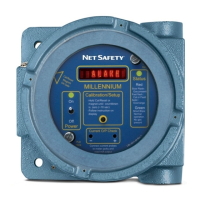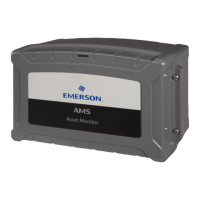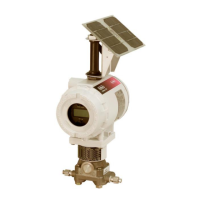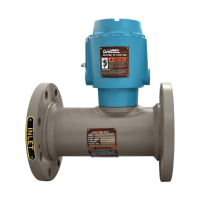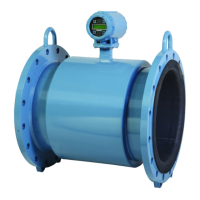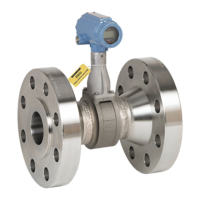Instruction Manual
748275-F
September 2003
1-2 Description and Specifictions Rosemount Analytical Inc. A Division of Emerson Process Management
Model NGA2000 I/O Modules
C Connecto
(85 to 264 VAC)
DC Connector
(24 VDC)
Power Input
Unit
Power
230 V
∼
50/60 Hz
F1/F2 = T 1.25 A
115 V
∼
50/60 Hz
F1/F2 = T 2.5 A
24 V DC - IN
LON 1
LON 2
I/O Module
Window (used)
I/O Module
Windows (unused)
Network Port
nalyzer Module Window
(stand-alone configuration)
Figure 1-2. I/O Modules Location in Platform – Rear Panel View
1-2 BASIC FUNCTIONS
All Analog I/O Modules have three single-
pole, double-throw (SPDT) relay outputs, four
single-pole, single-throw (SPST) relay outputs
(all 24 VDC, 1A resistive), one analog output
and six digital inputs. These obtain their func-
tions from operator selectable software con-
figurations. Some of these input/output
functions are not available on some I/O Mod-
ules, depending on their specific functional
needs.
In fact, many functions are software configur-
able through the user's operator interface (ei-
ther the Platform's front panel display and
keypad or external control devices).
Besides providing basic output to external de-
vices, Analog I/O Modules provide standard
automatic range change between high and
low ranges. A user adjustable time delay is
available to prevent range switching in the
case of spiking.
1-3 INSTALLATION AND REMOVAL
Before installing an I/O Module, power down
the network. If the I/O Module is to be in-
stalled in an instrument, turn off the power to
the entire instrument. If the user's system
consists of separate, independently-powered
components, power to the Analyzer Module(s)
may be maintained while power to the other
components is turned off. In such a case,
disconnect the network connection to the Ana-
lyzer Modules.
See Figures 1-2 and 1-3. To install an I/O
Module in a Platform, do the following:
1. Remove a blank panel from any one of
the unused I/O Module slots in the rear of
the enclosure.
2. Insert the I/O Module into the open slot
with the printed circuit board oriented to
the left. (Hold the I/O Module by the
backplate; touching the PCB may damage
electronic components.)
3. Seat the connector into the Backplane,
ensuring a secure and proper fit.
4. Tighten the two screws on the I/O Module
backplate.

